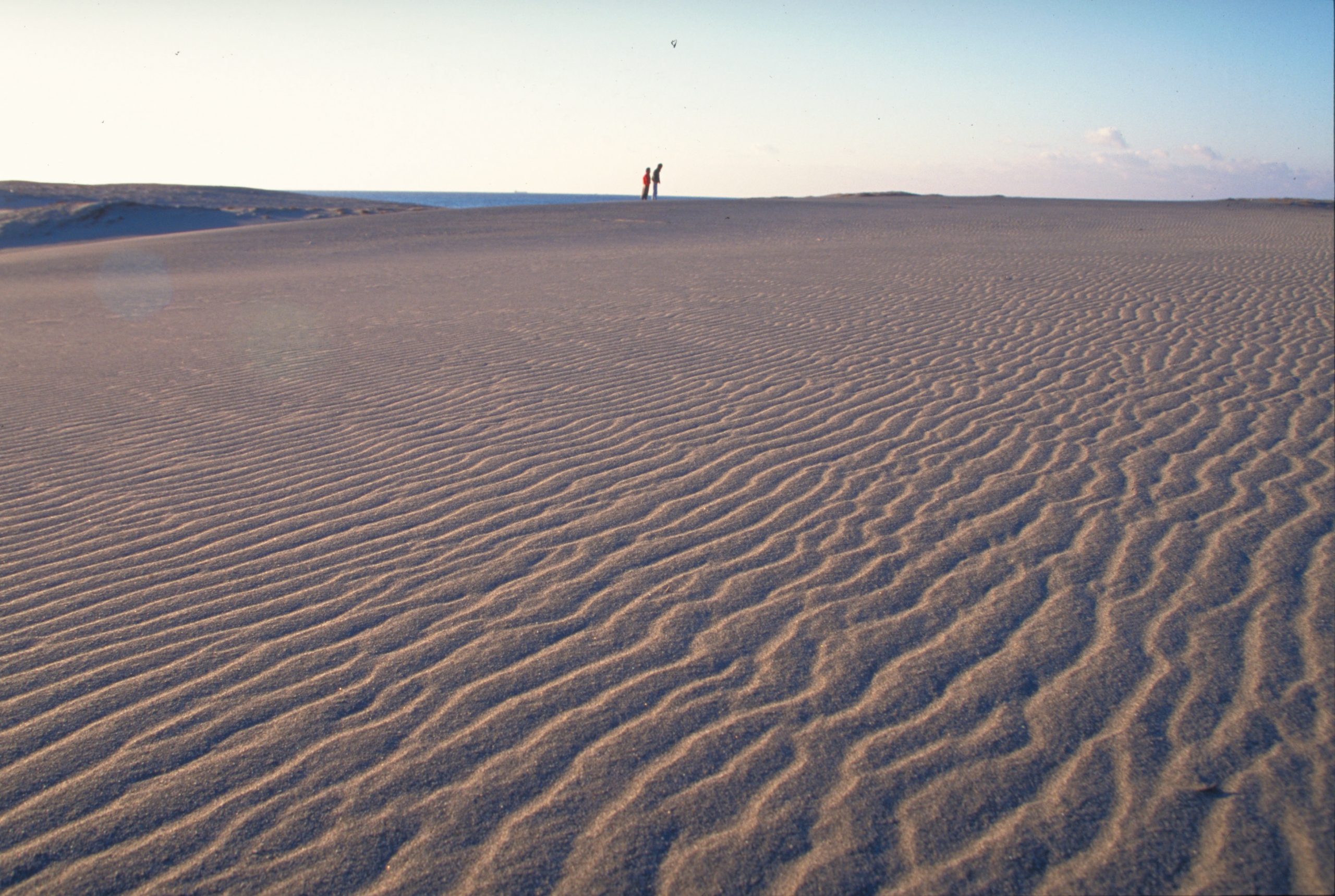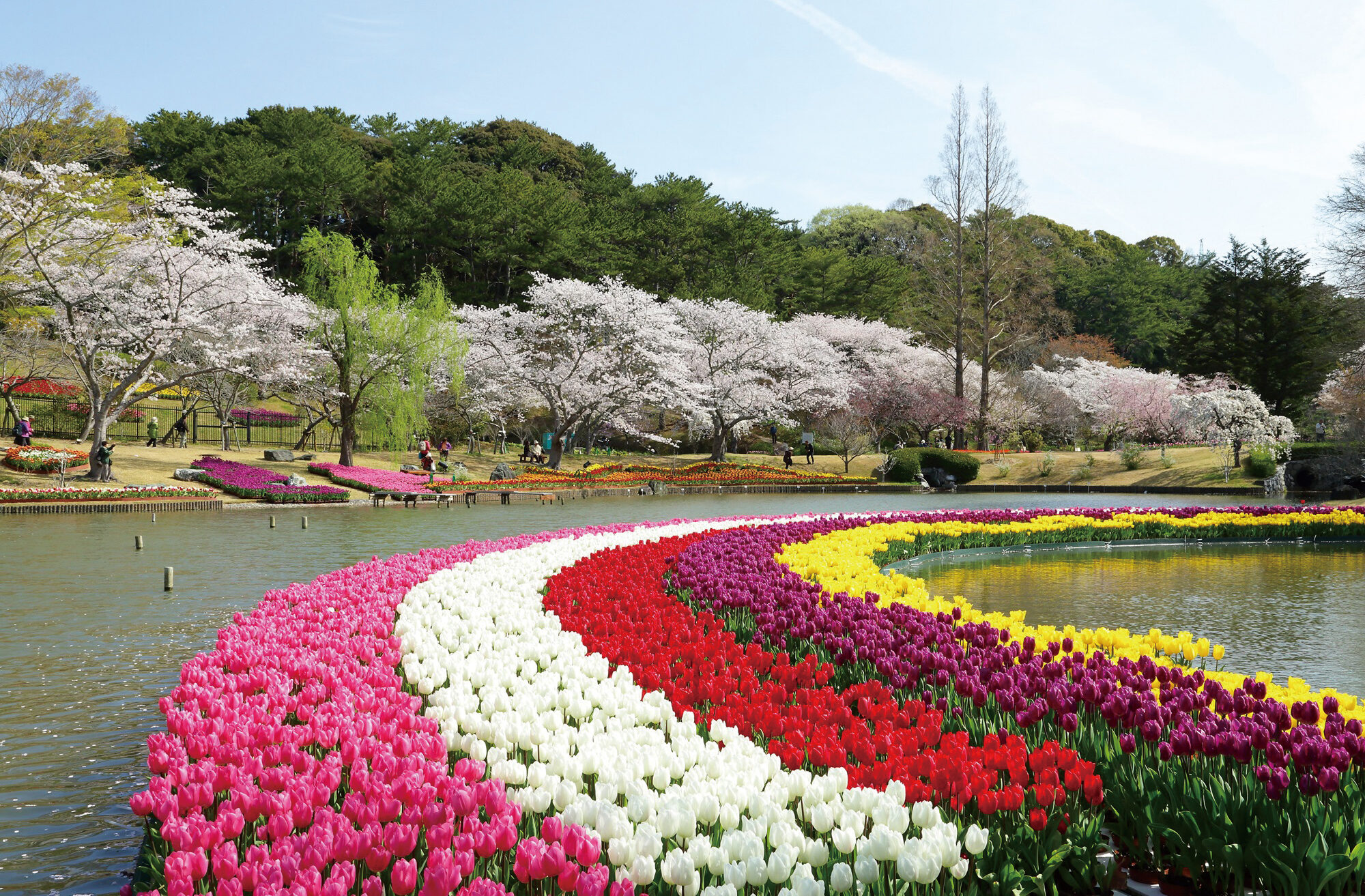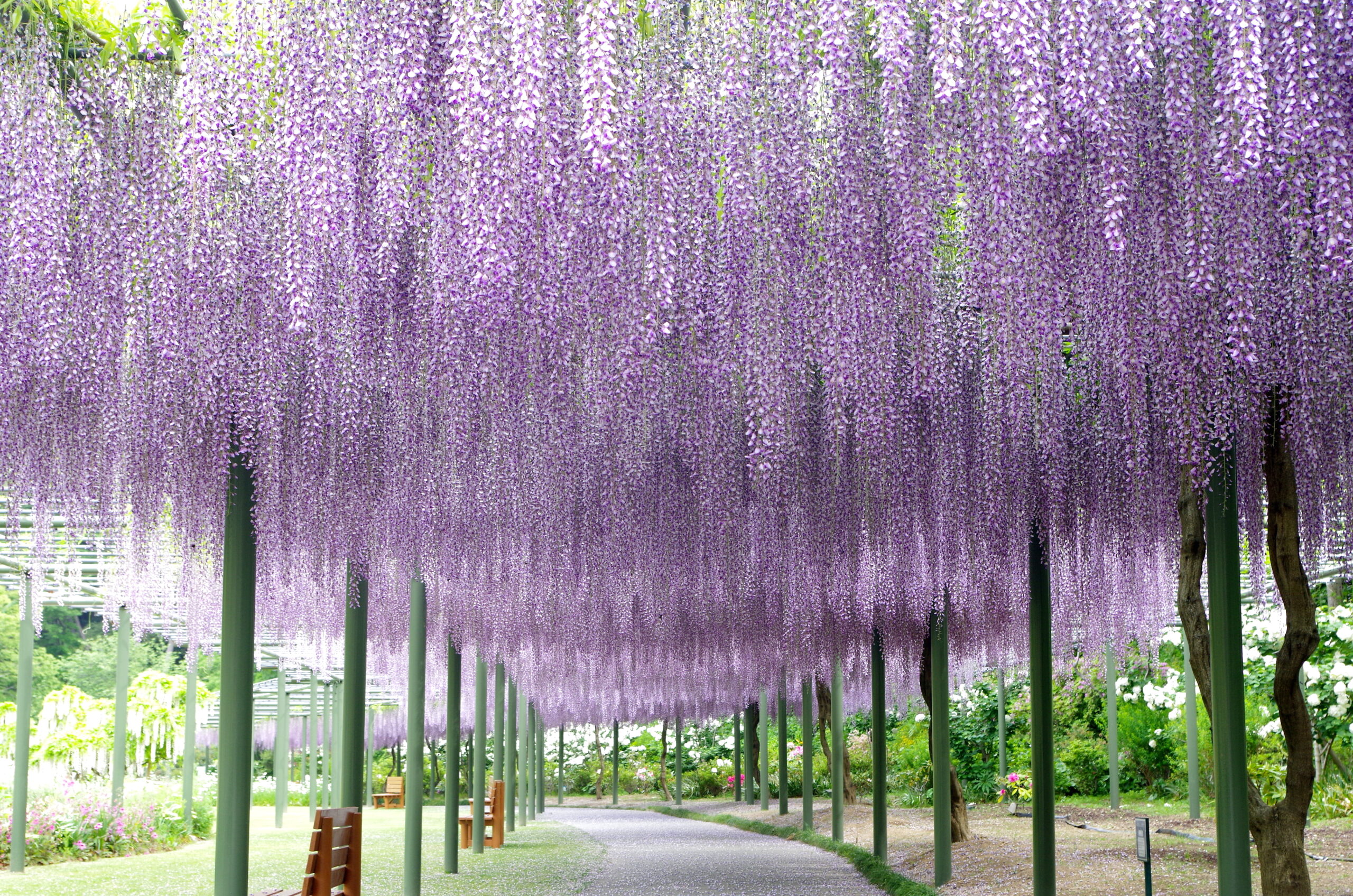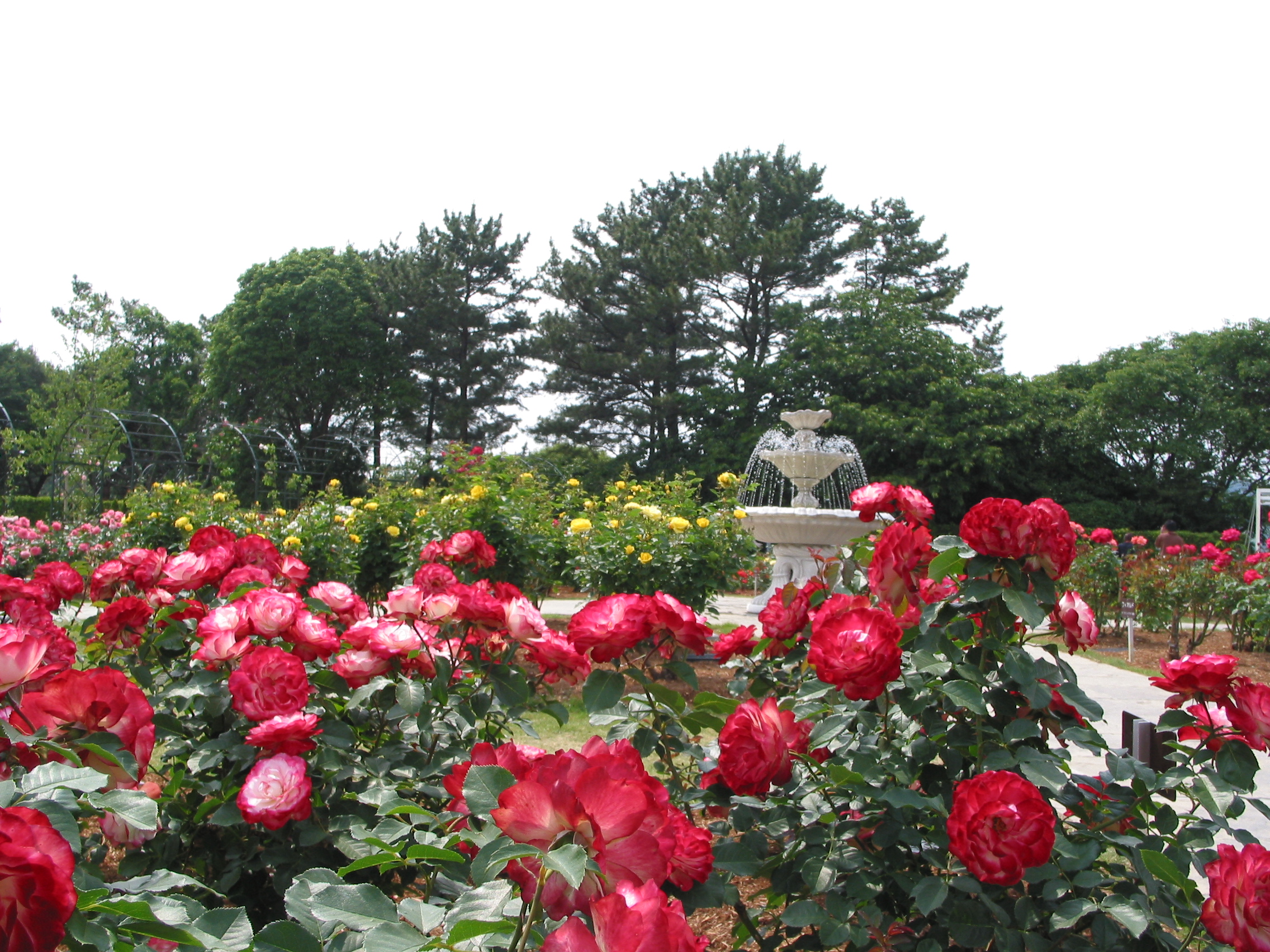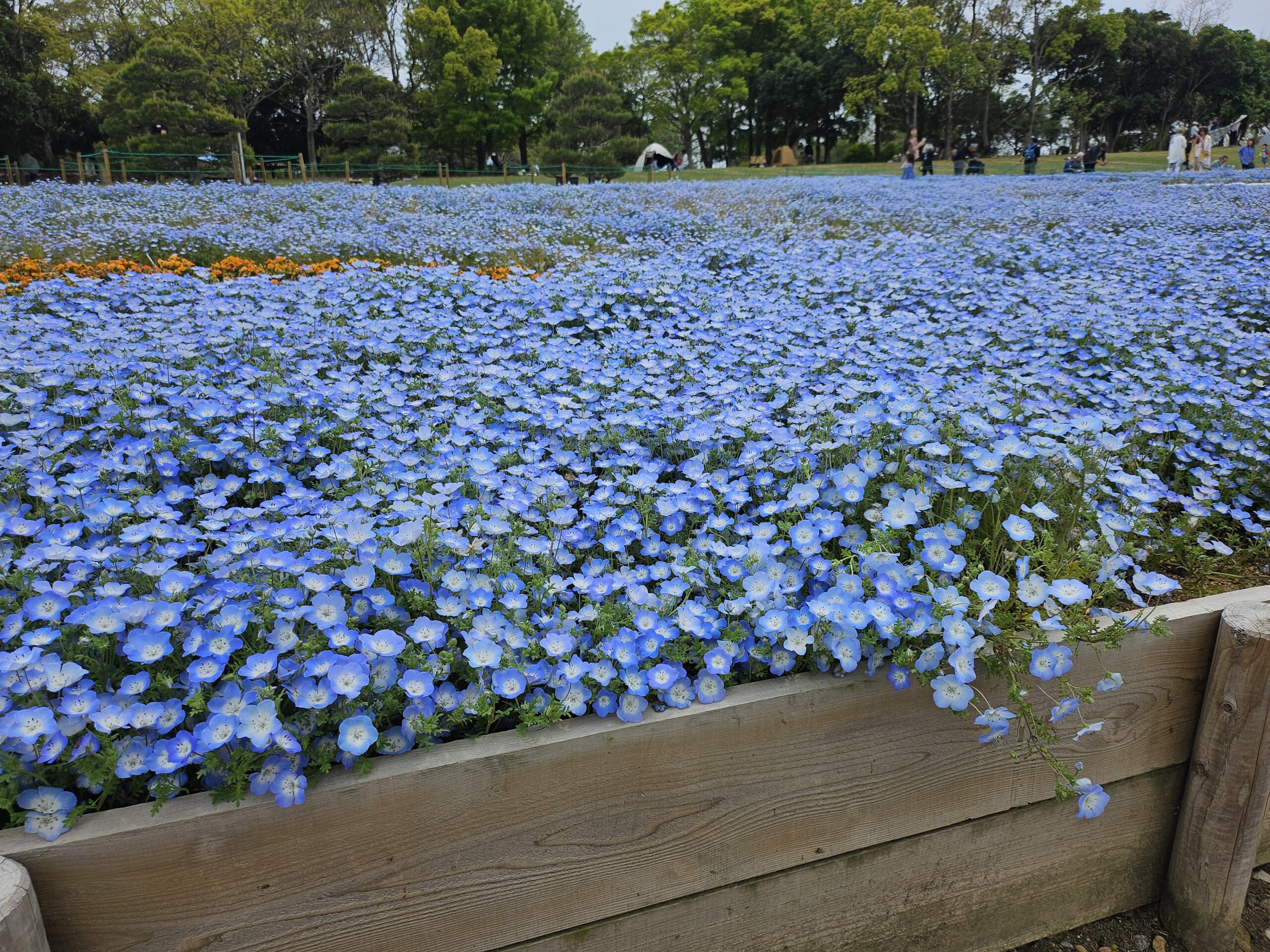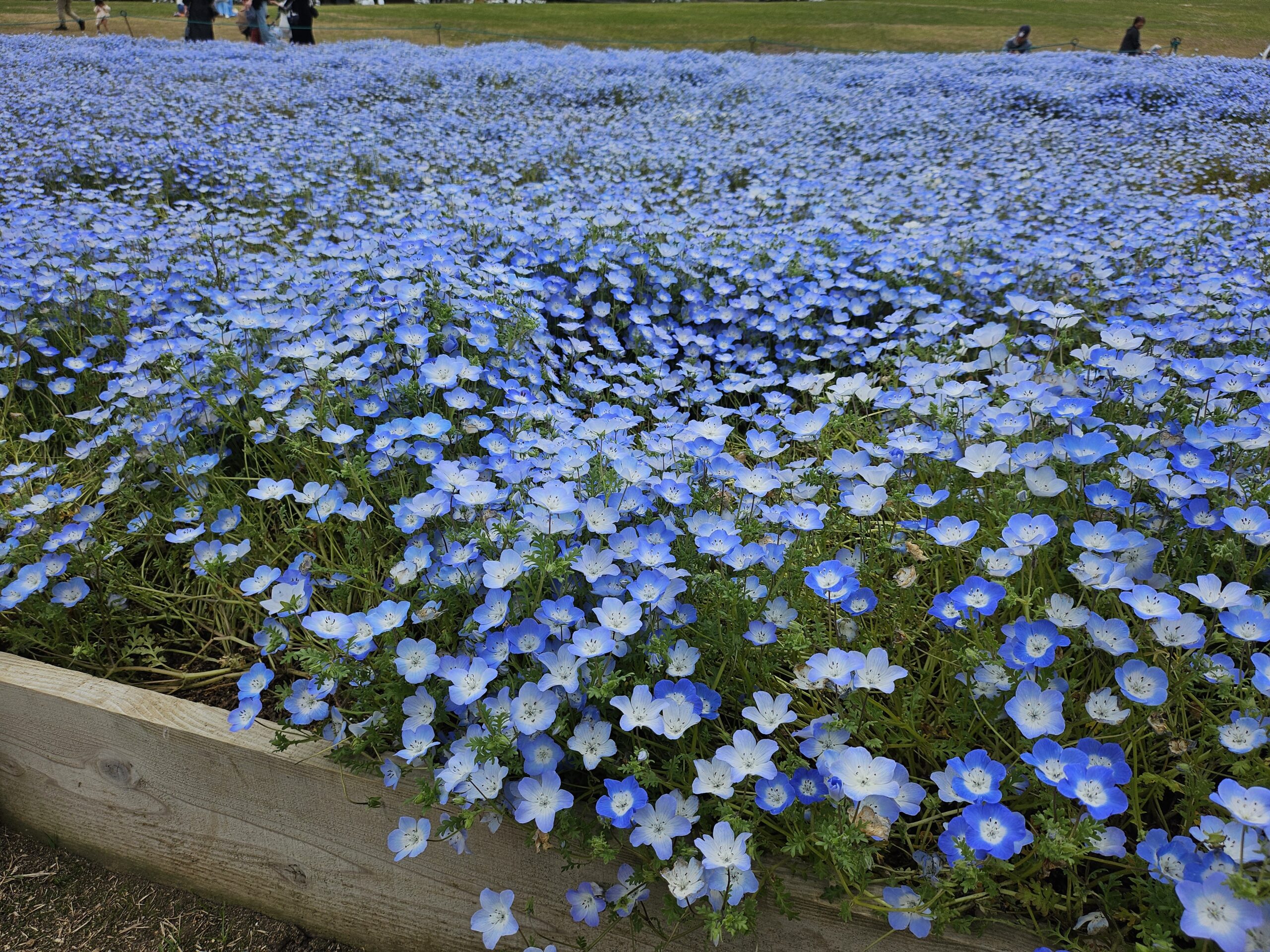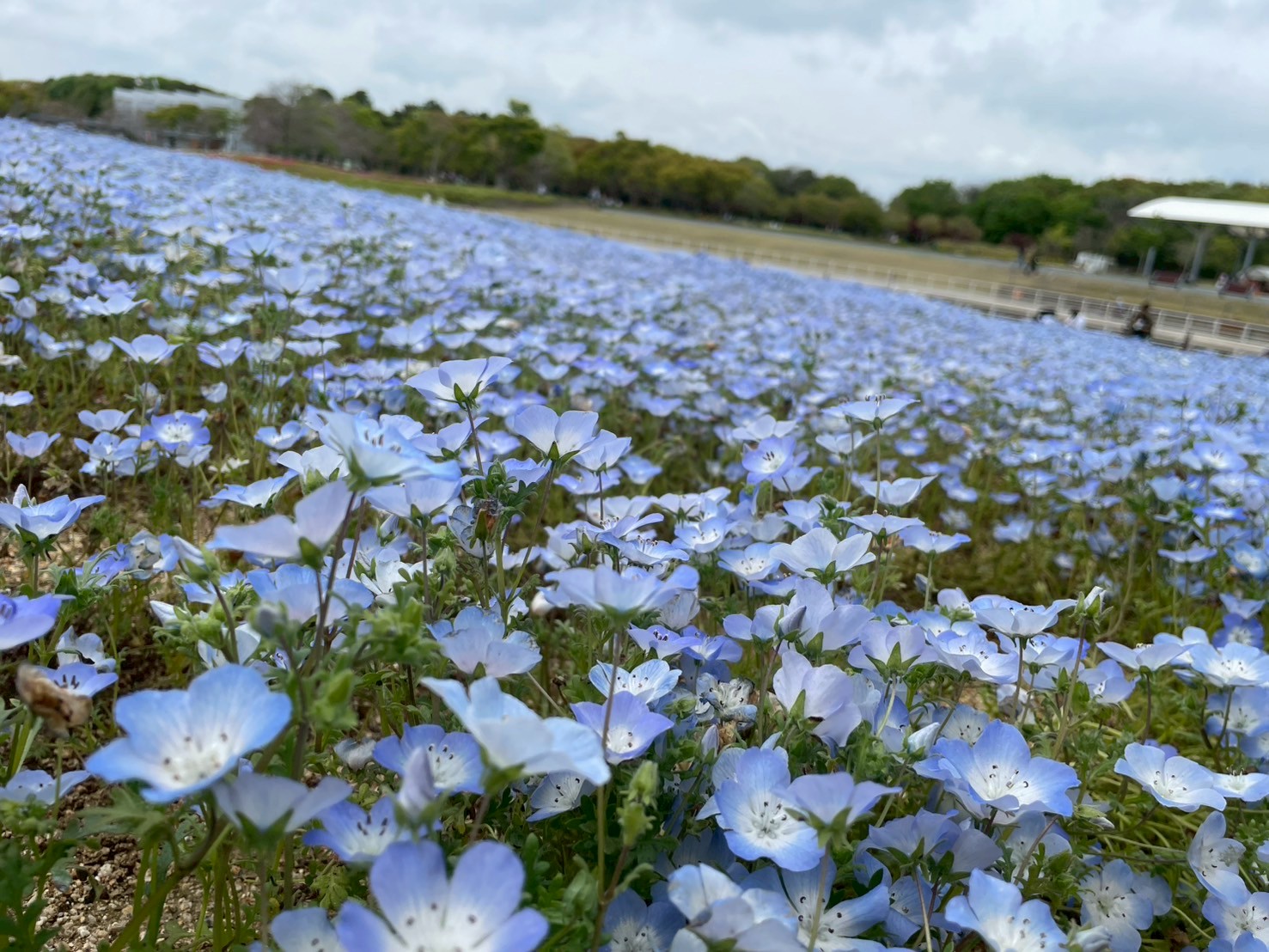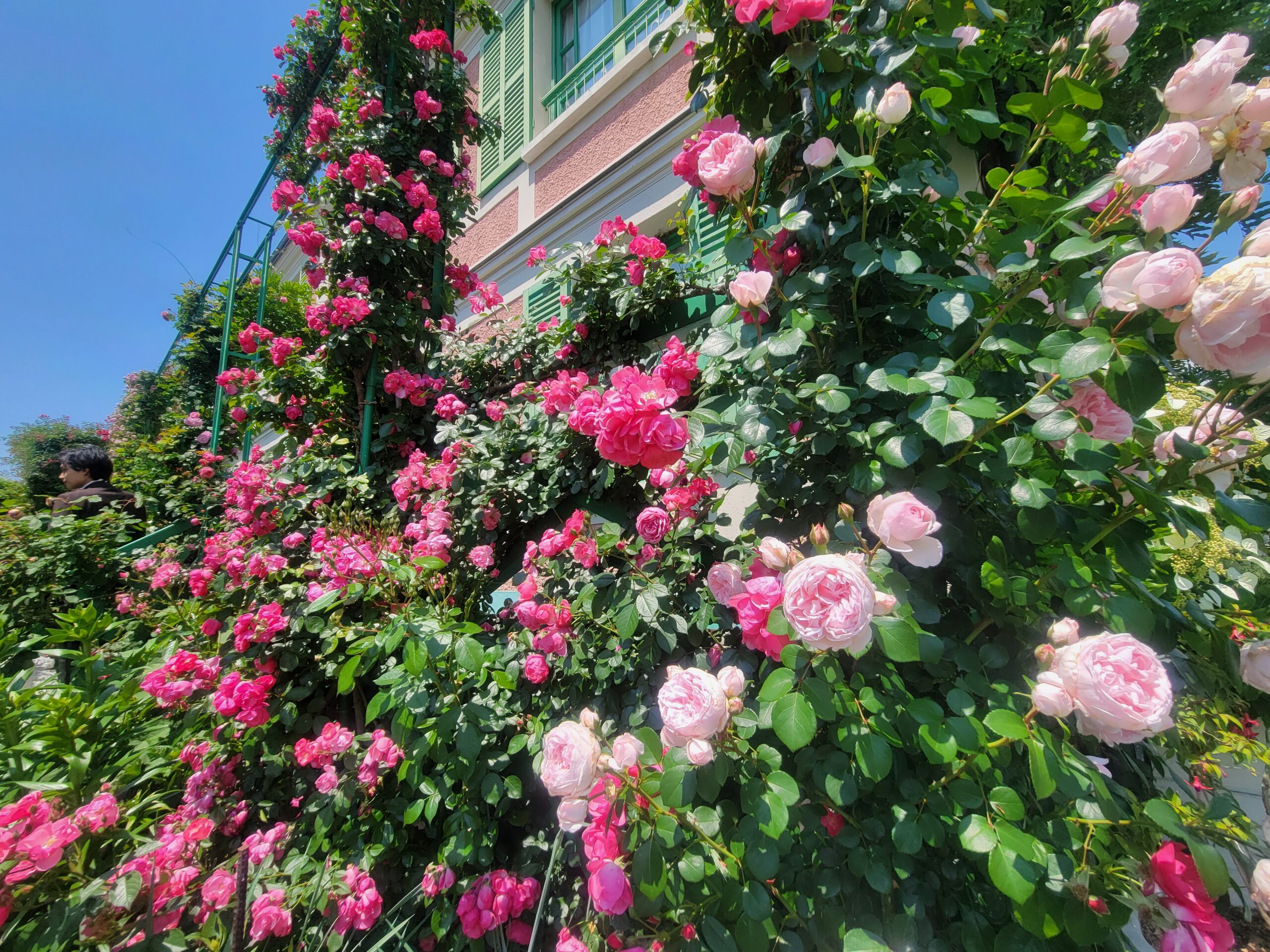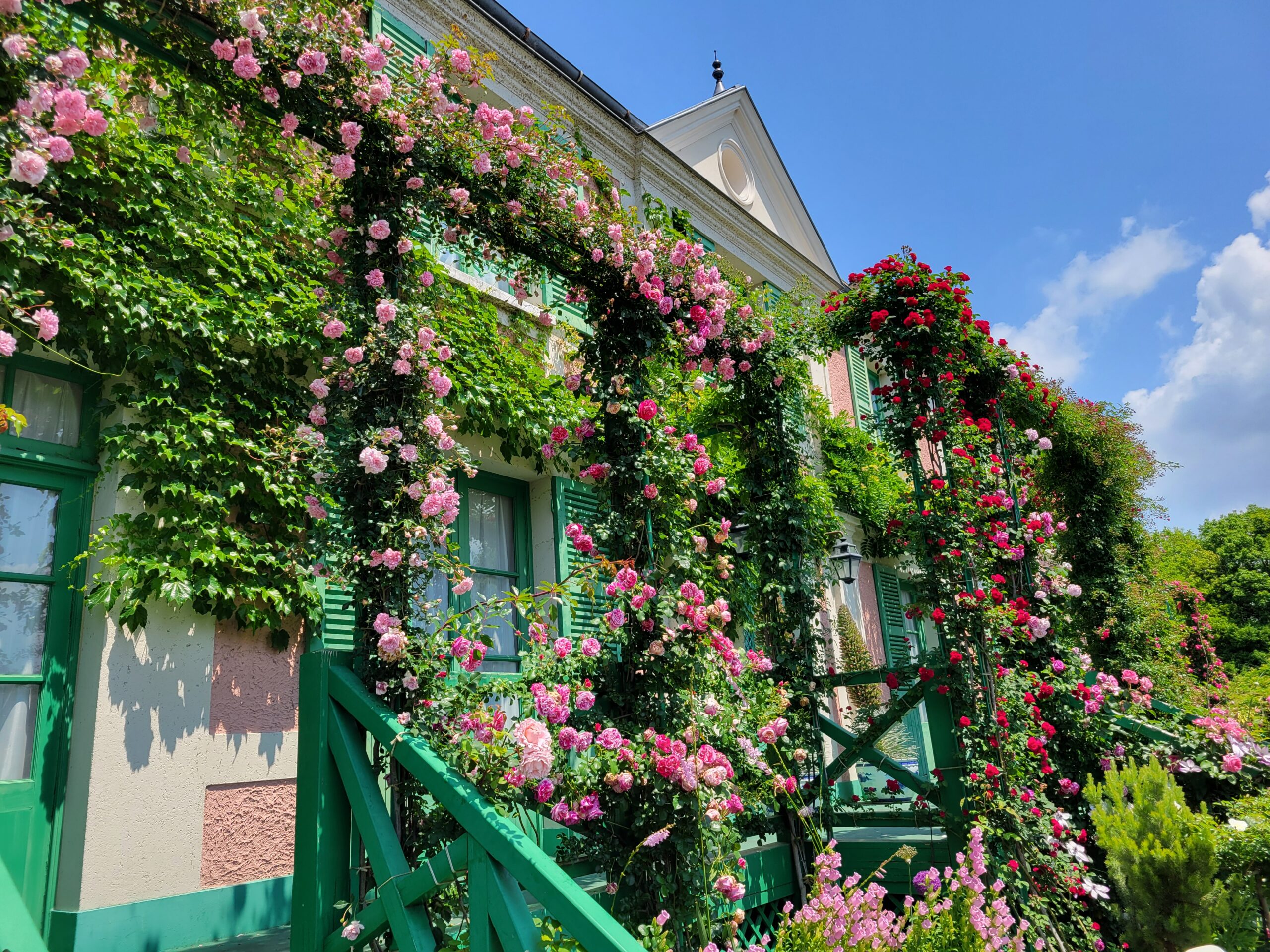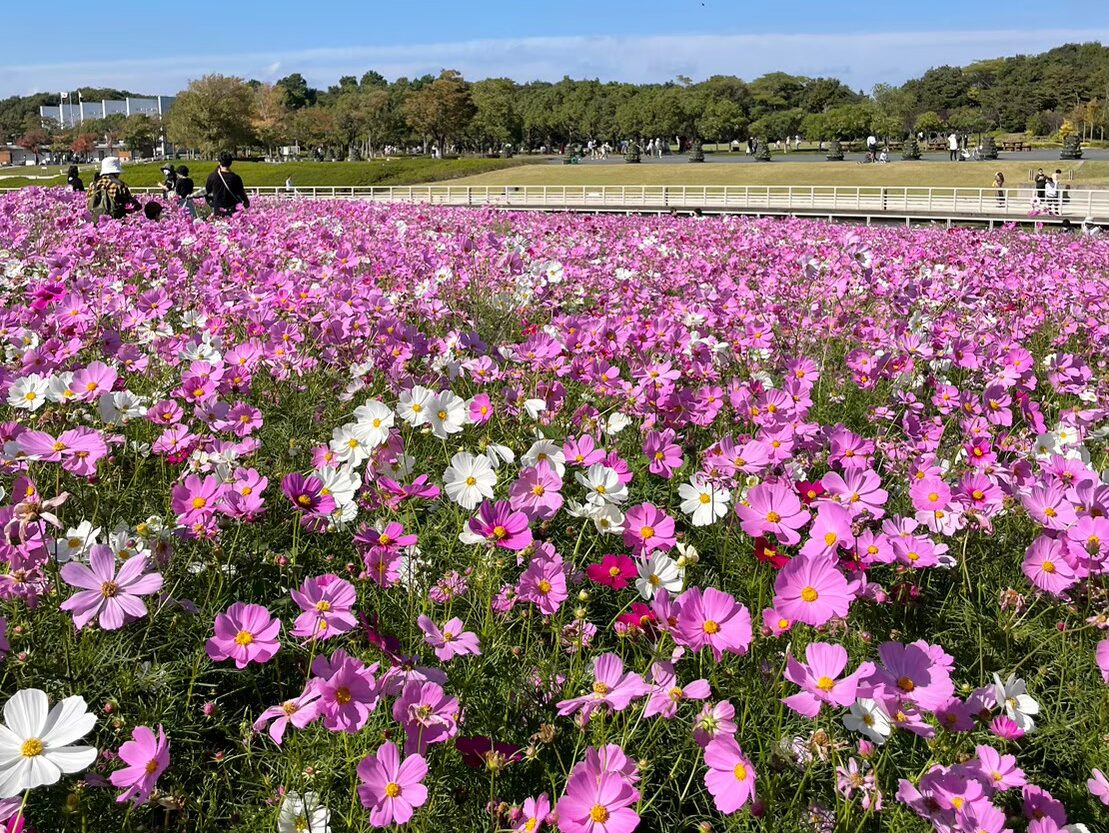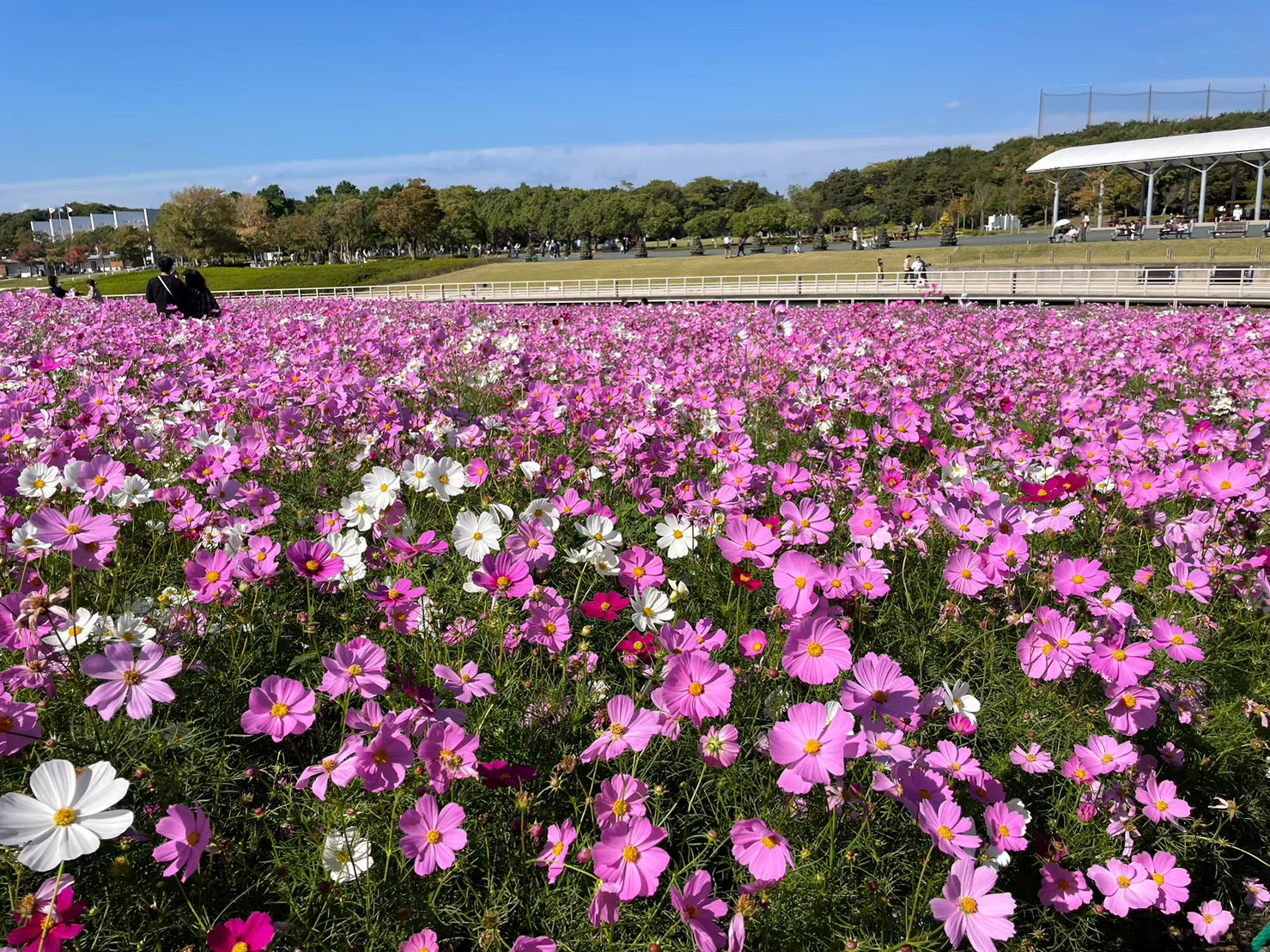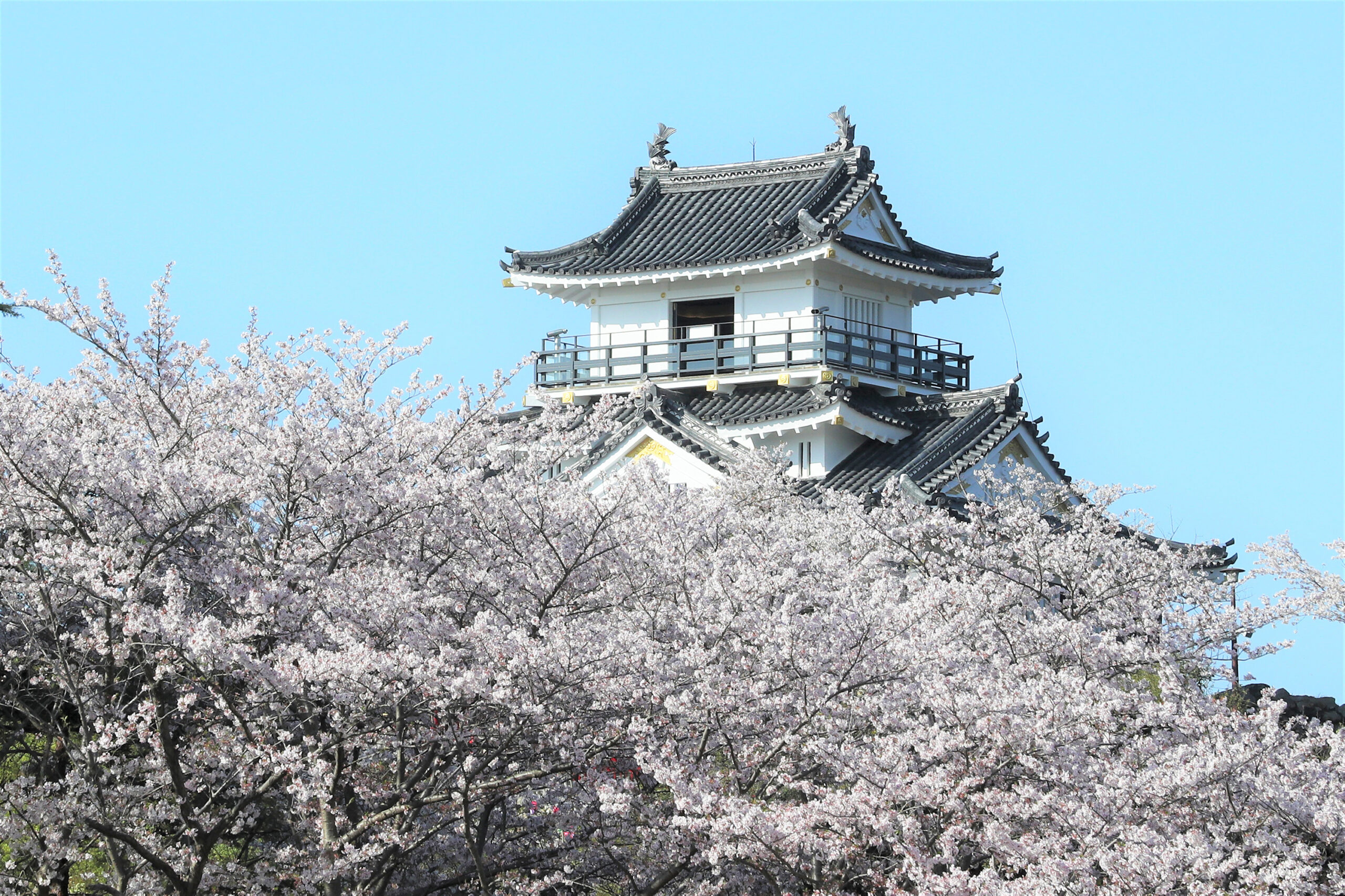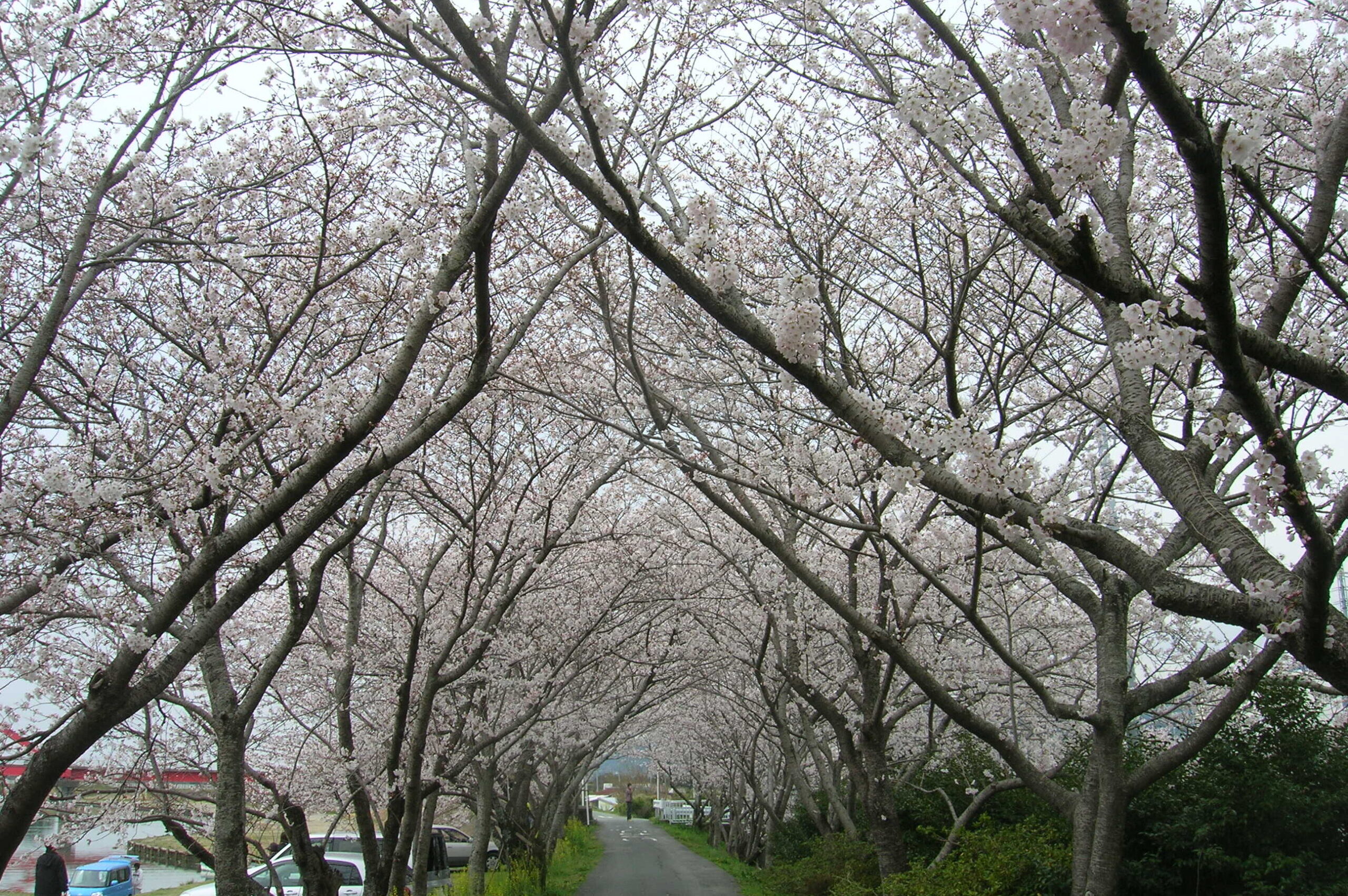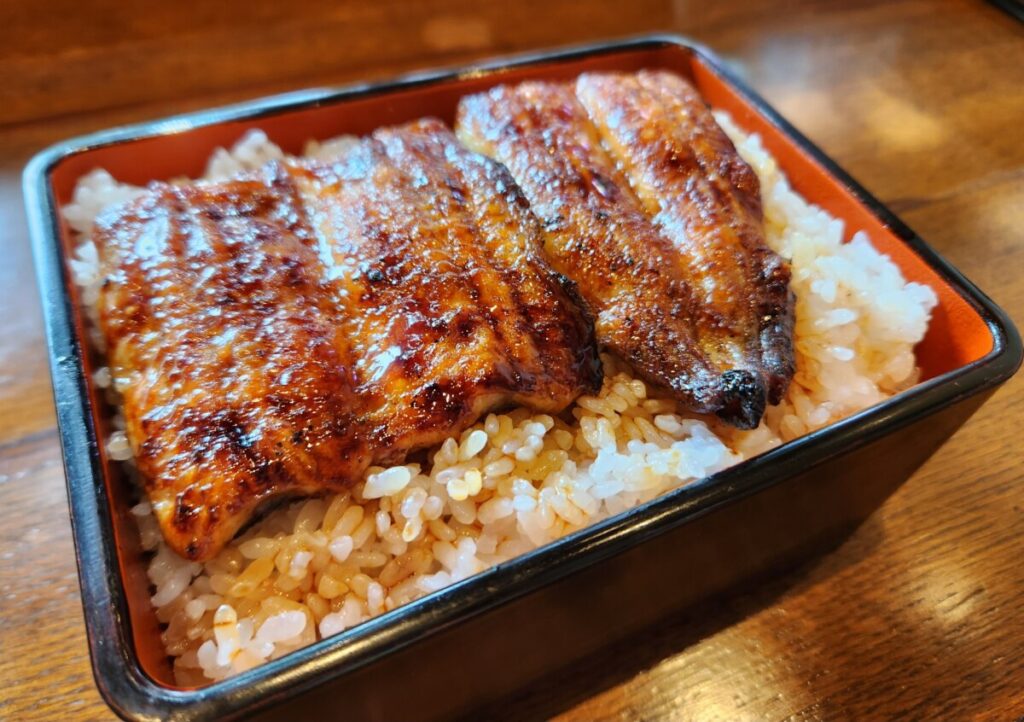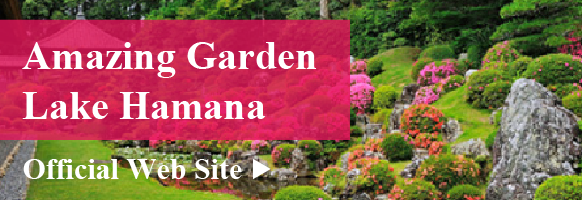Get to Know Hamamatsu
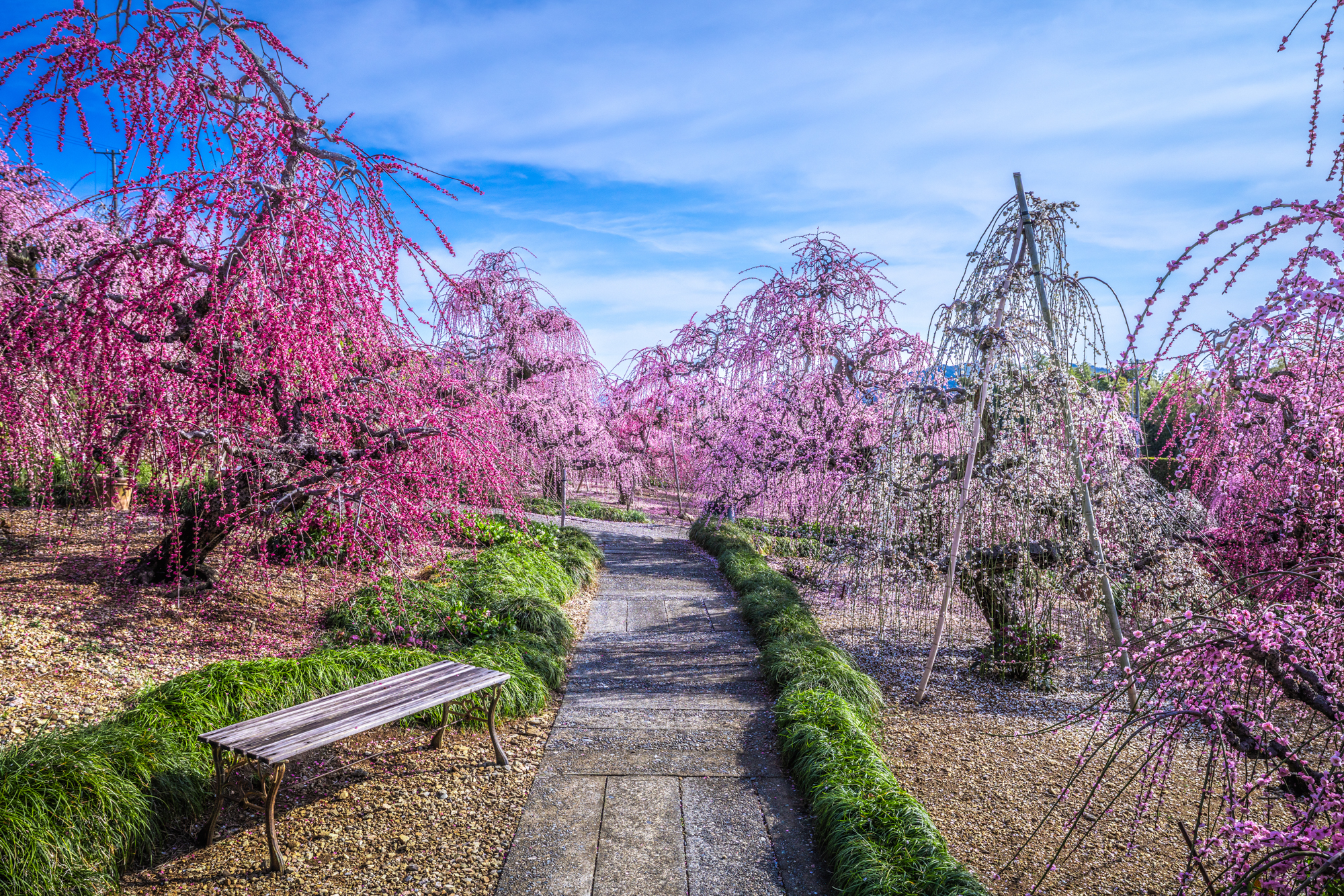
- Watch
A Bloom-Filled Escape to Hamamatsu & Lake Hamana
Did you know Hamamatsu is home to many beautiful flower spots that showcase Japan’s seasons? As you imagine flowers coming into bloom, consider adding these scenic places to your next trip…
Have you ever explored the Hamamatsu and Lake Hamana area, where beautiful flowers bloom throughout the seasons and let you feel the charm of Japan’s nature?
Cherry blossoms in spring, wisteria in early summer, and cosmos flowers in autumn—each season brings its own colors and charm, gently soothing the hearts of those who visit.
Strolling through flower-filled landscapes, snapping photos, and taking in the scent of the air and the breeze—these are some of the uniquely Japanese ways to enjoy each season.
Hamamatsu is still a hidden gem for many travelers, which makes it the perfect place to escape the crowds and truly relax.
Even if you missed this year’s blooms, I hope this article inspires you to add Hamamatsu to your list of future travel destinations.
As you picture the flowers in full bloom, why not add Hamamatsu to your next travel plans?
Surely, you will encounter a landscape that feels truly special to you.
*The usual bloom times are listed here as a general guide. Since blooming conditions can vary depending on the weather, be sure to check the latest information before you go.
Shoryu Weeping Plum Garden
The Shoryu Weeping Plum Garden is a hidden gem known to those in the know, open for just about one month, from around mid-February to around mid-March.

Inside the garden, over 350 weeping plum trees of more than 10 different varieties are planted.
Each one is carefully shaped in its own unique way, creating a stunning sight that seems like ‘a dragon soaring to the sky.’
One of the most popular spots is the plum tunnel.

This tunnel, inspired by the inside of a dragon’s body, offers an experience like walking through a shower of flowers.
It’s a popular spot where many visitors stop to take photos.
Also, delicate Christmas roses are planted at your feet, allowing you to enjoy their vibrant colors alongside the plum blossoms.
★Website: Shoryu Weeping Plum Garden
★Usual bloom time: early February to mid-March
★Access:
・About 15 minutes from the Hamamatsu Nishi IC on the Tomei Expressway.
・Take the bus bound for ‘Kanzanji Onsen’ from Bus Stop No. 1 at the North Exit of JR Hamamatsu Station. Get off at ‘Zoo’ and walk for about 30 minutes.”
Hamamatsu Flower Park
Nestled along the shores of Lake Hamana, ‘Hamamatsu Flower Park‘ is one of Shizuoka’s top flower spots, where flowers bloom in vibrant colors throughout the seasons.

In the vast garden, which makes the most of the natural landscape, you’ll find the ‘Garden of Cherry Blossoms and Tulips,’ said to be the most beautiful in the world.
Along with it, you can enjoy wisteria, roses, irises, and many other flowers that bloom throughout the seasons, creating a peaceful and soothing atmosphere.
The park also offers plenty of other attractions, such as the ‘Flower Train’ that runs through the garden and the spectacular ‘Fountain Show,’ where water and music come together in harmony.
.jpg)
Fountain Show
Additionally, during the cherry blossom and wisteria seasons, as well as the Christmas period, the park is open at night, offering a chance to enjoy the magical beauty of the illuminated flowers.
★favorite flowers among visitors
・Cherry Blossoms
At Hamamatsu Flower Park, a variety of cherry trees—including Somei Yoshino, Shidarezakura (weeping cherry), and Yaezakura (double-flowered cherry)—bloom one after another, gradually filling the park with the soft colors of spring.
Usual bloom time: Late March to mid-April.
・Tulips
The “Garden of Cherry Blossoms and Tulips” is one of the most popular spots in Hamamatsu Flower Park. With tulips arranged in matching shades or playful mixes of color, the stunning displays never fail to delight visitors.
Usual bloom time: Late March to mid-April.
・Wisteria
Wisteria blooms beautifully along a 170-meter-long trellis, as well as on tree-shaped displays. Clusters of white and purple flowers sway in the breeze, creating a curtain of blossoms.
Their graceful fragrance gently signals the end of spring.
Usual bloom time: Late April to early May.
・Roses
The Rose Garden is filled with roses of all colors and shapes, blooming in every direction.
It’s also a perfect spot for those looking to capture a romantic photo.
Usual bloom time: Mid-May to early June.
・Japanese Irises
In June, the Iris Garden takes center stage with around 700,000 Japanese irises blooming in full glory.
They create a refreshing early-summer scene, perfect for a peaceful stroll.
Usual bloom time: Early June to mid-June.
★Website: Hamamatsu Flower Park
★Access:
・Take the bus bound for Kanzanji Onsen from Bus Stop No. 1 at the North Exit of JR Hamamatsu Station (about 40 minutes). Get off at Flower Park.
・About 15 minutes by car from the Hamamatsu Nishi IC on the Tomei Expressway.
Hamanako Garden Park
Surrounded by the beautiful natural scenery along the shores of Lake Hamana, you can enjoy a gentle breeze from the lake as you explore the Gardens.
One of the highlights is the “Garden Museum,” inspired by Monet’s famous garden and tucked just beyond a grand arch of roses.
You’ll also find beautifully recreated traditional gardens from Asia, Europe, and other parts of the world.

Garden Museum
The 50-meter-high observation tower offers a fantastic view of the entire garden park and the scenic beauty of Lake Hamana.
You can also enjoy the breathtaking sight of nemophila, cosmos, and other flowers in full bloom, creating a stunning landscape throughout the garden park.
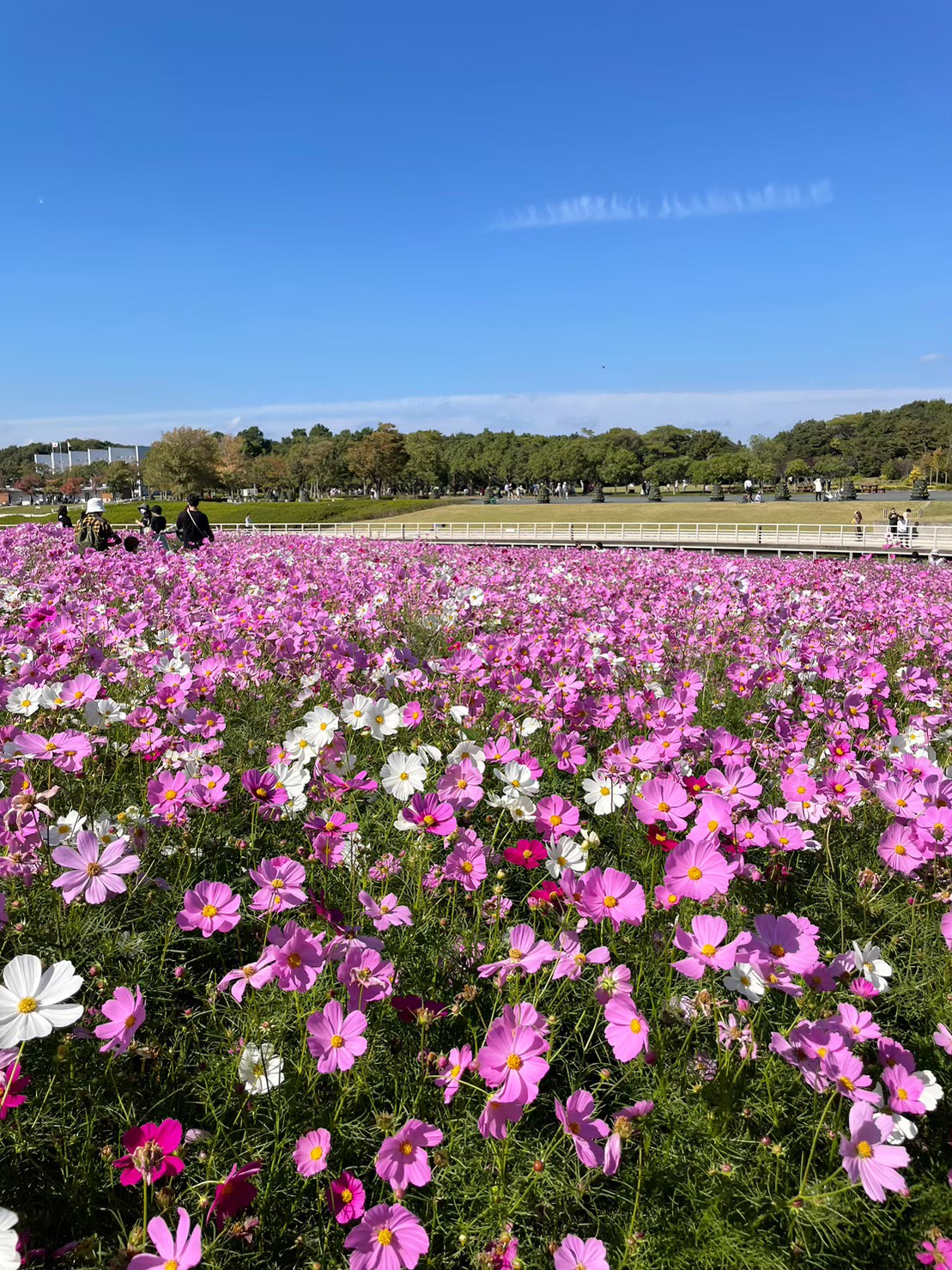
Surrounded by the refreshing light and breeze by the lakeside, you can enjoy a comfortable stroll amidst the beautiful flowers.
★favorite flowers among visitors
・Nemophila
In early spring, about 300,000 nemophila bloom all at once, creating a stunning blue carpet as far as the eye can see.
Usual bloom time: Early April to mid-April.
・Roses
One of the most popular spots for roses in Hamamatsu Lake Garden Park is the Garden Museum.
Usual bloom time: Mid-May to early June.
・Cosmos
In the flower plaza, cosmos bloom across the field, signaling the arrival of autumn.
Usual bloom time: October.
★Website: Hamanako Garden Park
★Access:
・Take the bus bound for “Hamanako Garden Park” from Bus Stop No. 1 at the JR Hamamatsu Station North Exit. The ride takes about 70 minutes. Get off at “Hamanako Garden Park” (Please note that buses are quite infrequent).
・About 25 minutes from the Hamamatsu Nishi IC on the Tomei Expressway.
Kaname Jingu Shrine
On a single tree, you can see flowers in two shades—white and soft pink—or even three colors, creating a truly beautiful sight.
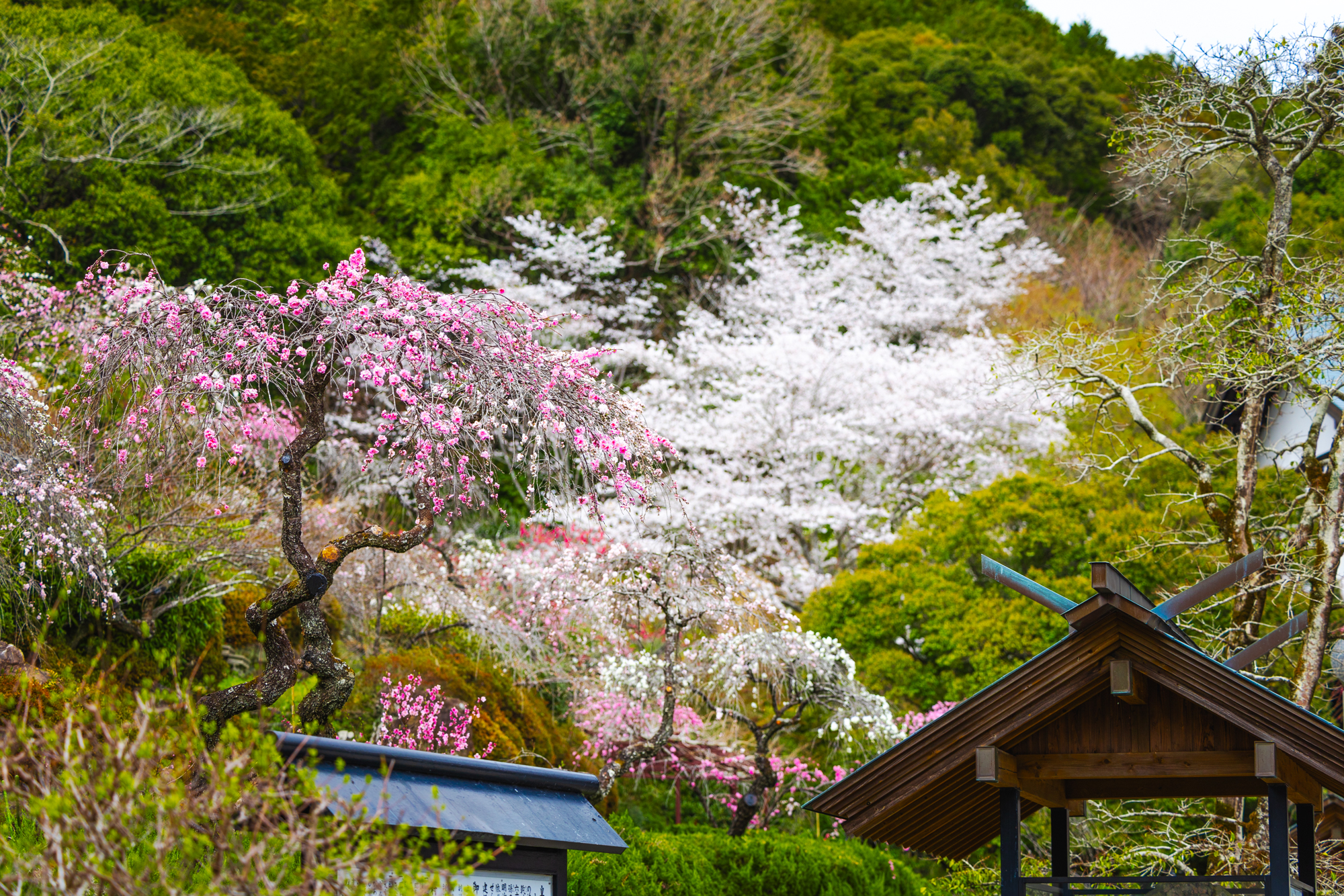
The beautiful contrast of colors is truly impressive, and during the blooming season, it is known as a beloved spot, treasured by the locals.
If the timing is right, you can enjoy the beautiful sight of it in harmony with cherry blossoms, adding even more vibrancy to the arrival of spring.

While you can’t enter the main shrine, you are free to explore and enjoy the grounds at your leisure.
★Website: Kaname Jingu Shrine
★Usual bloom time: early April to mid-April.
★Access: About 10 minutes from the Hamamatsu Inasa IC on the Shin-Tomei Expressway.
Other lovely cherry blossom spots to explore:
・Hamamatsu Castle Park
In spring, around about 330 cherry trees bloom in full glory.
The Sakura Festival is held during the blooming season, making it a popular spot for cherry blossom viewing.
It’s conveniently located near Hamamatsu Station, so you can easily stop by and enjoy the beauty of the season.
★Website: Hamamatsu Castle Park
★Access:
・About 20 minutes on foot from JR Hamamatsu Station.
・From Bus Stop No. 1 at the JR Hamamatsu Station North Exit, take a bus and get off at “Shiyakusho Minami” (about 5 minutes).
・From Bus Stop No. 13 or 14 at the North Exit, take a bus and get off at “Hamamatsu Castle Park Iriguchi (Entrance)” (about 5 minutes).
・Miyakoda River Cherry Blossom Path
Along a 1.5 km riverside walking trail, about 300 Somei Yoshino cherry trees form a beautiful tunnel of blossoms in spring.
It’s a peaceful spot where you can enjoy a gentle stroll beneath the flowers.
★Access:
・From Bus Stop No. 15 at the JR Hamamatsu Station North Exit, take a bus bound for “Kiga Ekimae (Kiga Station)” (about 60 minutes). Get off at “Kiga Ekimae (Kiga Station bus stop).”
・Just a short walk from Kiga Station on the Tenryu Hamanako Railway.
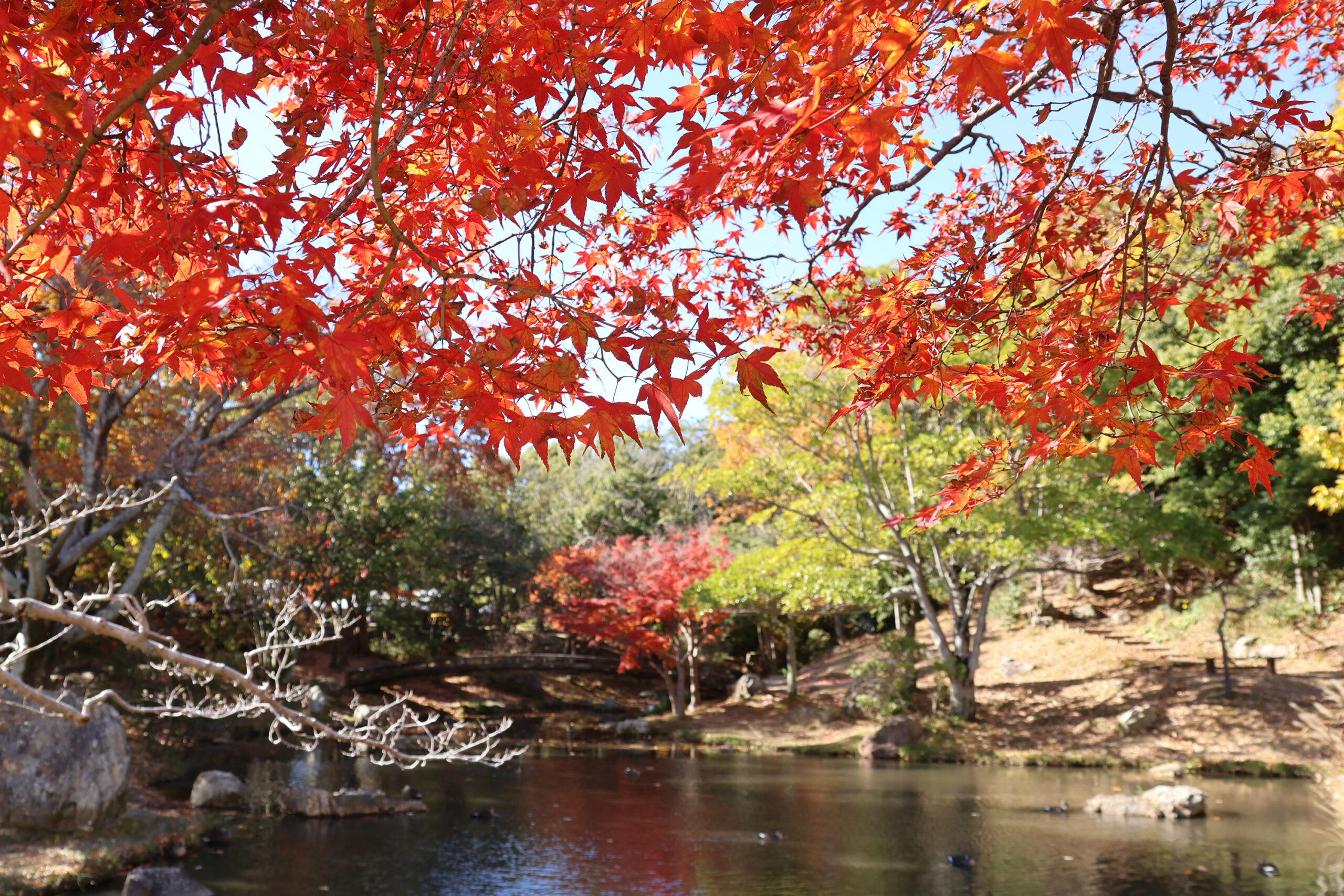
Fall in Hamamatsu: A Quiet Journey Through Colors and Calm
